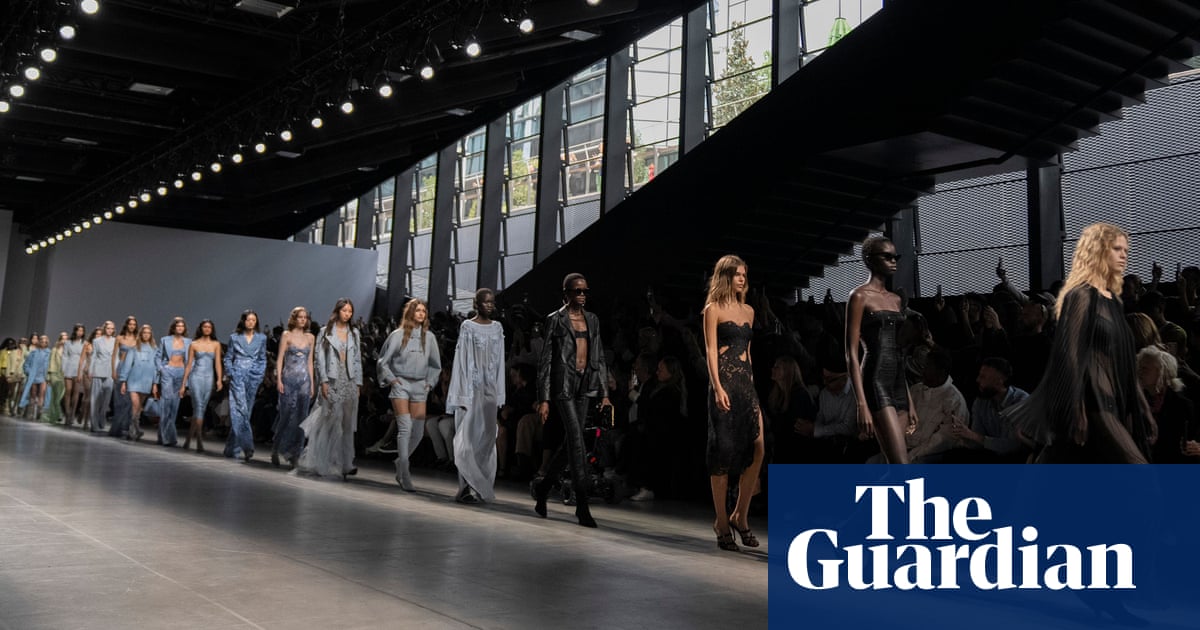Fashion
Fashion experts raise concern about return to using ‘extremely thin models’

Fashion insiders have expressed concerns that previous progress made towards size inclusivity in the industry is being curtailed.
Vogue Business released its spring/summer ‘25 size inclusivity report on Tuesday and said: “We are facing a worrying return to using extremely thin models” with “a plateau in size inclusivity efforts across New York, London, Milan and Paris”.
Of the 8,763 looks presented across 208 shows in the womenswear collections earlier this month, 94.9% were shown on straight-size models who measure between a US size 0-4 (the equivalent of a UK 4-8). Only 0.8% of models were plus-size, also known as curve (UK 18+), and 4.3% were mid-size (UK 10-16). In Milan, 98% of looks were shown on straight-size models, and Vogue Business said some mid-size figures were skewed by co-ed brands that featured menswear looks modelled by muscular men.
“It feels like we’ve taken 10 steps backwards,” said Anna Shillinglaw, the founder of the model agency Milk Management.
Thin models have always dominated the catwalks, but in more recent years a wider range of body types had started to be included. Jill Kortleve made headlines at Chanel in 2000 when she became the first model above a UK 8 to be cast in a decade. In another landmark moment for inclusive casting, British Vogue featured Kortleve alongside the plus-size models Paloma Elsesser and Precious Lee on its April 2023 cover with the headline “The New Supers”.
Eighteen months later, however, the fashion industry has pivoted, with several insiders lamenting a new resistance to inclusivity.
“I now feel that some of the higher-end designers looked at curvier women more as a fad in fashion rather than something that is real life,” Shillinglaw said, noting that the average dress size in Britain is a 16.
Chanel included some mid-size and plus-size models this season, but other luxury brands did not. Instead, it was left to emerging brands, including Karoline Vitto in London and Ester Manas in Paris, to bolster body diversity.
after newsletter promotion
Stella McCartney apologised last week after receiving criticism for sharing an image of a model backstage at her show who some social media users said was unhealthy. Chloe Rosolek, a London-based casting director, said the elimination of bigger-sized bodies from the major brands was baffling: “It’s so strange to just pretend that a whole group of people don’t exist.”
There is a wider cultural mainstreaming of thinness because of drugs such as Ozempic, originally developed to treat diabetes, being co-opted for weight loss by Hollywood and beyond. Vogue Business describes it as “the glamorisation of thinness”.
As celebrities and influencers shrink, even straight-size models are feeling pressure to maintain their measurements or lose inches. “There’s been a decrease in size across the board and that includes already straight-size models,” Rosolek said. “A lot of models that used to be plus-size are now mid-size.”
Kering, the parent company of brands including Gucci and Balenciaga, and LVMH, which includes Louis Vuitton and Dior, joined forces in 2017 with a charter to protect models’ wellbeing. It resulted in a ban on size zero and under-16 models from their shows.
Kering raised its minimum age to 18 in 2019, but its main rivals including LVMH have not followed suit. This season in Milan, Sunday Rose Kidman Urban, the 16-year-old daughter of Nicole Kidman and Keith Urban, opened the Miu Miu show, while according to the fashion database Models.com, several top-ranking models were under 21 and size zero.
Many models are naturally thin and and find themselves being unfairly thin-shamed. But just like ballet’s “Balanchine” body, the model industry has a reputation for creating unrealistic and unhealthy ideals. There are still many ultra-thin and unwell models being booked.
Emily McGrail, a 21-year-old model from Manchester, has been sharing her experience of working in Milan, where she attended castings for shows including Prada, on TikTok. After she failed to get any work, she was advised to lose a centimetre from her hips. “I looked around at the other models and I just felt like I didn’t deserve to be there,” she told the Guardian. “In comparison I felt ‘fat’. Technically, for my height and age I would be considered underweight but looking around at these girls I did feel big.”
James Scully, a former casting director, said: “We’ve gone back to the way things were 10 years ago. These models are just serving a purpose. They’re not here to bring any kind of character or joy or sell anything. They’re back to being a clothes hanger.”









